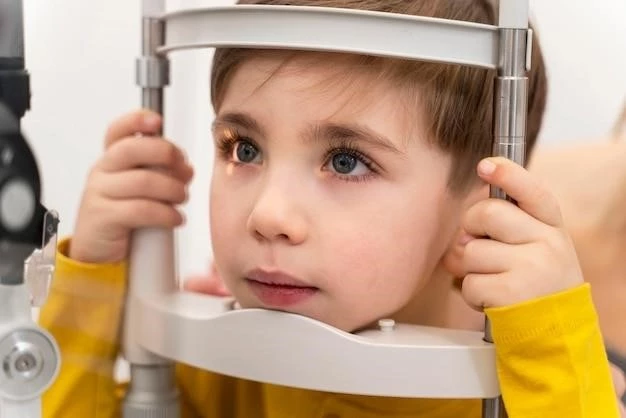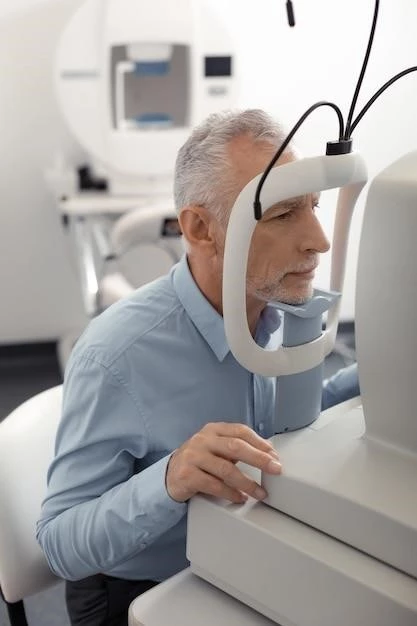Introduction
Ocular coloboma and imperforate anus are congenital conditions involving the eye and the anal region, respectively. The combination of these two anomalies can lead to diverse outcomes and treatment approaches.
Overview of Ocular Coloboma-Imperforate Anus Syndrome
Ocular coloboma and imperforate anus are congenital anomalies that can occur together, leading to a spectrum of outcomes and treatment options. Imperforate anus involves the absence of a normal anal opening at birth, while coloboma is a defect that can affect the eye, specifically the iris. This combination of conditions can result in complex medical management and may be associated with additional systemic abnormalities. Research indicates a genetic basis for these conditions, with advancements in understanding the underlying chromosomal abnormalities contributing to this syndrome.
Causes and Symptoms
The causes of ocular coloboma-imperforate anus syndrome are largely genetic, with chromosomal abnormalities playing a significant role. Symptoms may include iris coloboma, imperforate anus, preauricular tags, congenital cardiovascular abnormalities, urinary tract anomalies, and more.
Genetic Basis and Chromosomal Abnormalities
Ocular coloboma-imperforate anus syndrome is rooted in genetic factors, with chromosomal abnormalities often implicated in the development of these congenital conditions. Researchers have identified specific gene mutations, like EP300, that contribute to the manifestation of ocular coloboma and imperforate anus, shedding light on the genetic underpinnings of this syndrome.
Diagnosis and Prognosis
Diagnosing ocular coloboma-imperforate anus syndrome involves assessing for iris coloboma, imperforate anus, preauricular tags, cardiovascular abnormalities, and other associated defects. Prognosis varies based on the severity of individual cases and potential systemic features.
Associated Defects and Variability in Prognosis
Ocular coloboma-imperforate anus syndrome can be associated with additional anomalies like preauricular tags, genitourinary malformations, and congenital heart defects, contributing to the variability in prognosis and treatment outcomes for affected individuals. The presence of chromosomal abnormalities and specific gene mutations can further influence the clinical presentation and management strategies.

Treatment and Management
Treatment for ocular coloboma-imperforate anus syndrome varies based on individual symptoms. Surgical interventions may be necessary for anal atresia, while therapies addressing ocular abnormalities can help improve vision and overall quality of life.
Research and Case Studies
Studies focusing on EP300 mutations have provided insights into the genetic underpinnings of ocular coloboma and imperforate anus syndrome. Understanding the implications of specific gene mutations like EP300 can further aid in identifying treatment approaches for affected individuals.
Studies on EP300 Mutations and Ocular Coloboma
EP300 mutations have been a focus of research related to ocular coloboma and imperforate anus syndrome, shedding light on the genetic mechanisms contributing to the development of these conditions.
Ocular coloboma-imperforate anus syndrome has been associated with Cat Eye Syndrome (CES), characterized by an extra chromosome 22. Individuals with CES may exhibit a range of systemic abnormalities beyond ocular and anorectal anomalies, highlighting the interconnected nature of genetic conditions.
Complications and Associated Syndromes
Imperforate anus, when combined with ocular coloboma, can be part of syndromes like Cat Eye Syndrome, impacting various body systems and requiring multidisciplinary care.
Link to Cat Eye Syndrome and Other Systemic Features
Ocular coloboma-imperforate anus syndrome can be linked to Cat Eye Syndrome (CES), a rare condition associated with an extra chromosome 22. This syndrome presents with a variety of systemic abnormalities beyond ocular and anorectal anomalies, demonstrating the complex nature of genetic conditions.
Prevention and Genetic Counseling
Genetic counseling plays a crucial role in high-risk families affected by ocular coloboma-imperforate anus syndrome, providing insights into inheritance patterns, potential risks, and family planning options.
Role of Genetic Counseling in High-Risk Families
Genetic counseling is essential for high-risk families affected by ocular coloboma-imperforate anus syndrome. It provides valuable information on the inheritance patterns, potential risks, and family planning options, aiding in making informed decisions regarding the management and implications of this complex genetic condition.

Ongoing Studies and Future Directions
Current research focuses on understanding genetic mechanisms to improve diagnosis and treatment outcomes for ocular coloboma-imperforate anus syndrome. Future directions aim to enhance genetic counseling and therapeutic interventions for affected individuals.
Advancements in Understanding and Treating Ocular Coloboma-Imperforate Anus
Ongoing advancements in research aim to enhance the understanding of genetic mechanisms underlying ocular coloboma-imperforate anus syndrome, leading to improved diagnostic and treatment strategies. Future directions focus on refining genetic counseling practices and developing innovative therapeutic interventions to address the complexities of this condition.
